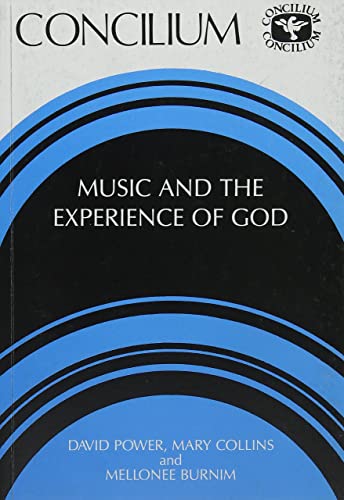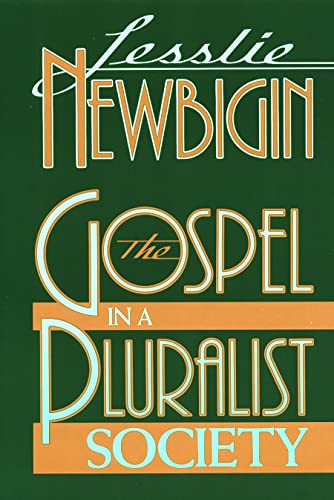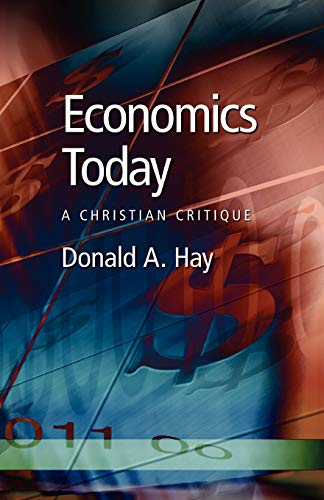Overcoming the World: Politics and Community in the Gospel of John
Written by David Rensberger Reviewed By D. A. CarsonRensberger, Associate Professor of NT at the Interdenominational Center in Atlanta, has produced a well-written and provocative study that attempts to link the Fourth Gospel—traditionally the ‘spiritual gospel’—to broader themes of liberation, to hard social and political decisions. In his reading, traditionally ‘religious’ acts such as baptism and eucharist become marks of a self-consciously countercultural community.
In the first chapter, Rensberger sets the stage by rapidly reviewing recent Johannine scholarship. As he sees it, the creative movement is toward the delineation of the Johannine community in conflict with synagogual Judaism. Whether or not Johannine Christianity is a sect in the sense that it has broken relations with other Christians, it is certainly a ‘conversionist community’ (using the categories of Bryan R. Wilson, Magic and the Millennium: A Sociological Study of Religious Movements of Protest Among Tribal and Third World Peoples).
The second chapter focuses on Nicodemus and the blind man (Jn. 3 and 9 respectively). With respect to John 3, Rensberger is not interested in sorting out whether Nicodemus is an historical figure, but in thinking through ‘the symbolic role he plays in the Fourth Gospel’ (p. 37), for ‘as usual [John] seems less concerned with the meaning of this character for Jesus’ history than with his meaning for the history of the Johannine community’ (pp. 37–38). But what does Nicodemus symbolize? Rensberger’s contribution is the suggestion that he plays a role ‘as a communal symbolic figure’ (p. 38, emphasis his). In particular, Nicodemus symbolizes the group of ‘crypto-Christians’ (the terminology is that of J. Louis Martyn) who are Christians in some sense but who so hide their profession of faith that they do not suffer the expulsion from the synagogue that the rest of the Christian community endures. They are ‘successful enough at avoiding detection to have caused considerable distress to John and his community’ (p. 41). By contrast, the blind beggar symbolizes the courageous Christian who, faced with a similar choice, comes out clearly in favour of public identification with the Christian community.
The third chapter is devoted to a compositional analysis of John 3. The two principal parts of the chapter are held together, Rensberger argues, by a single theme: the need to go beyond half-belief to full-hearted confession of Jesus. In both cases this is accomplished in baptism (since Rensberger interprets Jn. 3:3, 5 to have primary reference to Christian baptism), and the baptism of John the Baptist has the similar aim of forcing profound decision and therefore communal division. In his fourth chapter, Rensberger discusses both baptism and the eucharist in their function as boundary-markers. Baptism ‘represents the threshold between the world and the community for John, and also the risk of crossing that threshold’ (p. 81). The eucharist reinforces this boundary, and maintains solidarity between the individual believer and other believers, since neither sacrament is performed by the individual in isolation from others.
Chapter five treats the trial of Jesus and the politics of John. By casting Jesus as a king over against both Pilate and Barabbas, the Fourth Gospel ‘confronts the issue of Israel’s freedom in the late first century Roman Empire with an alternative to both zealotry and collaboration, by calling for adherence to the king who is not of this world, whose servants do not fight but remain in the world bearing witness to the truth before the rulers of both synagogue and Empire’ (p. 100).
Chapter six attempts in an exploratory way to relate these findings to what is ‘somewhat uneasily’ called liberation theology. The call for Nicodemus to decide, to make a public transfer of allegiance, is what the saying ‘You must be born from above’ is all about; and, more generically, this becomes in our time a call to decide, to identify today with people who are on the margins of society. ‘Nicodemus—that is, the group of people in the late first century whom he symbolizes—is being called upon to leave a secure, if ambivalent, situation by making known his solidarity with an oppressed minority. He is bidden to decide, and is told that on one side, and on one side only, lies the eternal life of God. He is told to come out of hiding’ (p. 114). ‘Where is Nicodemus to be found today?… Nicodemus is to be found, to begin with the most exact analogy, where Christians in power relate to powerless Christians. This is true whether power is derived from money, class, gender, race, education, political connection, or otherwise.… Nicodemus is to be found wherever one whose life is secure must face those whose life is insecure, or who struggle in the cause of God, and decide to say, “I am one of them” ’ (pp. 115–116). Similarly, when the Johannine Jesus refuses to grant allegiance to Caesar or to acknowledge his authority, he ‘provides the fundamental prerequisite for undermining his rule’ (p. 118). From this base, Rensberger explores possible lines of thought connecting Johannine theology with a variety of authors on black theology or liberation theology.
In his seventh and final chapter, Rensberger reflects on the process of thought that connects the particularities of the historical existence of the Johannine community at the end of the first century with appropriate application today. As long as, say, Bultmann’s atemporal existentialist approach prevailed, the challenge of this connection was not acute. But once the sociological and historical dimensions of the Johannine community are laid bare, then the challenge of moving from historical particulars no longer relevant (for instance, today the synagogue does not persecute the church) to contemporary application becomes formidable. Rensberger offers no formula, but rather a number of his preferences. In particular, the community’s mission, both then and now, is, like that of Jesus, to ‘take away the sin of the world’; and that is best accomplished in self-identity with the oppressed, with those on the boundaries of life.
Rensberger’s work is not easy to evaluate in short compass, primarily because it is built on so many assumptions that are largely in vogue in the world of biblical scholarship, but which cry out to be questioned—at least modified, in some cases jettisoned. The book is a delight to read. There is an easy familiarity with the literature and a graciousness of style that are altogether engaging. Even so, despite countless suggestive insights along the way, the thrust of the book is surely wrong-headed.
For a start, even if we grant that Rensberger’s reading of the Fourth Gospel is largely correct, and that the Johannine community is best thought of as being on the boundaries of life, it is an extraordinary step that thinks of this gospel as a call to side with every minority group on the boundaries of life. To use John’s gospel this way is to domesticate it, to hold it hostage to certain ‘in vogue’ sympathies on one wing of Christendom. The point is made clear from John’s gospel itself. John is not calling anyone to identify with Judaism, which was a minority group within the Empire; with the Essenes, a minority group within Judaism; with the Samaritans, a minority group within the province of Syria; with the Stoics, a minority group within the Hellenistic culture. His point is to call people to allegiance to one particular minority group, the messianic community, the new covenant people of God. More precisely, his purpose is to call people to allegiance to Jesus the Son of God—not to any Jesus but the Jesus of history and of faith to whom he bears witness. To extrapolate the exclusiveness of, say, 5:23; 10:7–10; 14:6 into a generic call to side with minority groups, regardless of all other considerations, is not only to miss the point of John, but to contradict it.
Quite apart from the application of Rensberger’s reading of John, is his reading itself justifiable? There was a time when form criticism taught us that although this or that pericope dealt with Jesus, and might or might not include historically accurate reminiscences, the pericope also reflected some sort of concrete situation in the church. Tradition and redaction criticism taught us to speculate about this ecclesiastical situation a little more closely, by analysing how these pericopae were shaped and put together. J. Louis Martyn taught us to go farther: he insisted that the church situation could be read off the very surface of the text, while it takes a great deal of cautious probing to say anything definite about what the text lets us know of the historical Jesus. Now sociology mediated through Rensberger, building on this reconstructed Johannine community, delineates the contours of the social forces that shaped it—and derives political lessons to be drawn by reflecting on those social forces.
Somewhere along the line, the text has been left behind. Not only have too many speculations been built on other speculations, but the obvious features of the text, such as its Christology, its claims to bring witness, its insistence on the uniqueness and exclusiveness of Jesus the Messiah, its remarkable ability to distinguish between what happened ‘back there’ during Jesus’ ministry and what was discerned only later, are all lost. Many scholars doubt that John 3:3, 5 is primarily about baptism, and that John 6 is primarily about the eucharist; but at very least, the point must be argued, and not assumed on the basis of a doubtful assumption as to how easy it is to read the ecclesiastical realities of the end of the first century off the surface of the text. And how can the Johannine emphasis on the uniqueness of Jesus as the lamb of God who takes away the sin of the world, as the one who dies so that the nation may be saved, as the shepherd who gives his life for his sheep, be so quickly transmuted into a call that we in our turn take away the sin of the world by opposing injustice? I am not for a moment suggesting we should ignore injustice; I am merely saying that this is an extraordinary reading of John’s gospel.
Indeed, I have gradually come to the conclusion the Fourth Gospel was not written primarily for church consumption anyway, but as an evangelistic booklet. I realize this point is debatable; but the very fact that it is debatable but is not, by and large, being debated, is profoundly troubling and indicative of what is going wrong in Johannine scholarship. The hesitant suggestions of earlier scholars have now become the ‘givens’ of this generation of scholars, who feel free to build fresh, hesitant suggestions on top of them. I am tempted to say that the emperor has no clothes—or, more conservatively, he is down to his underwear.
D. A. Carson
D. A. Carson is emeritus professor of New Testament at Trinity Evangelical Divinity School in Deerfield, Illinois, and cofounder and theologian-at-large of The Gospel Coalition.







